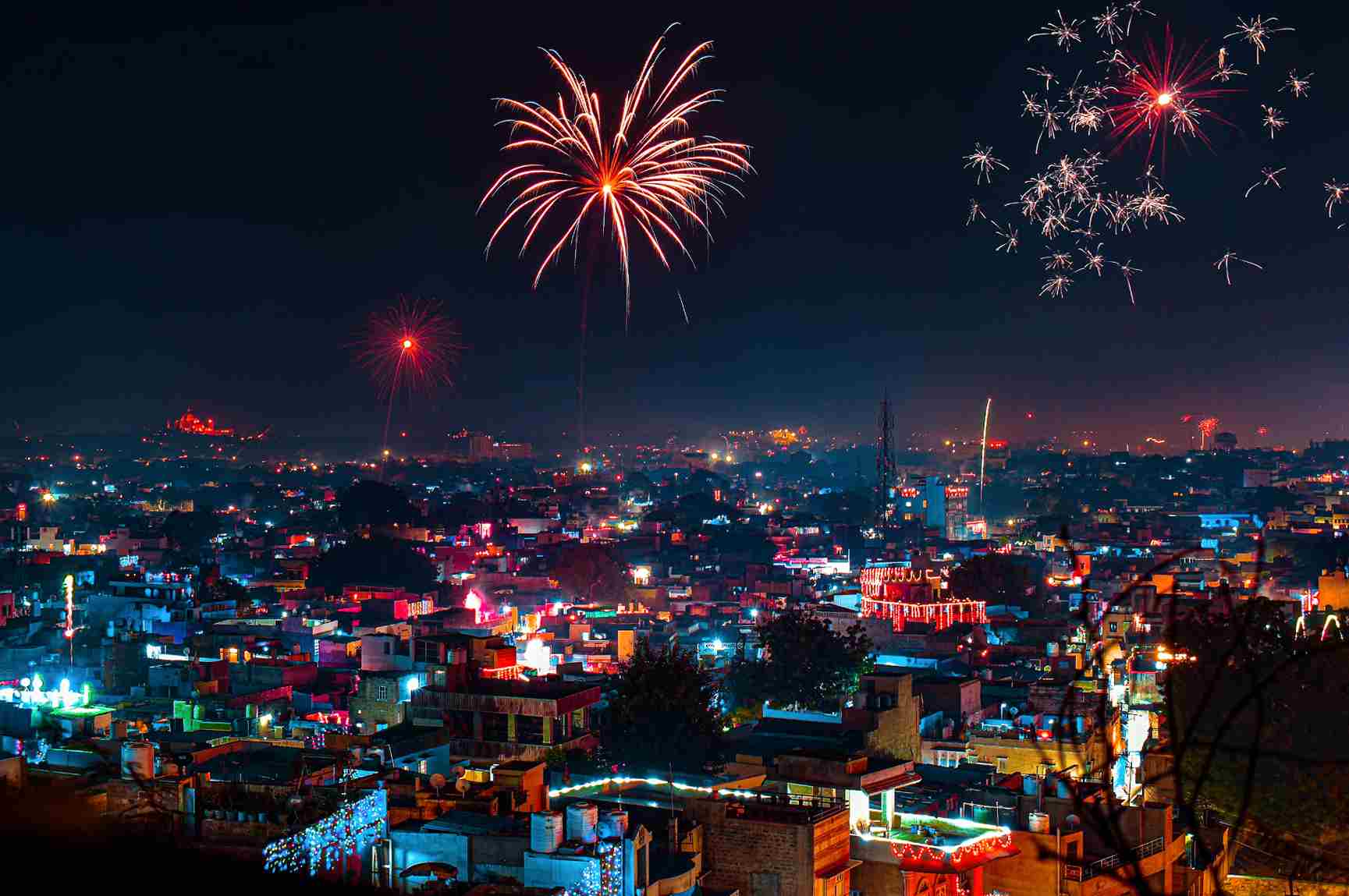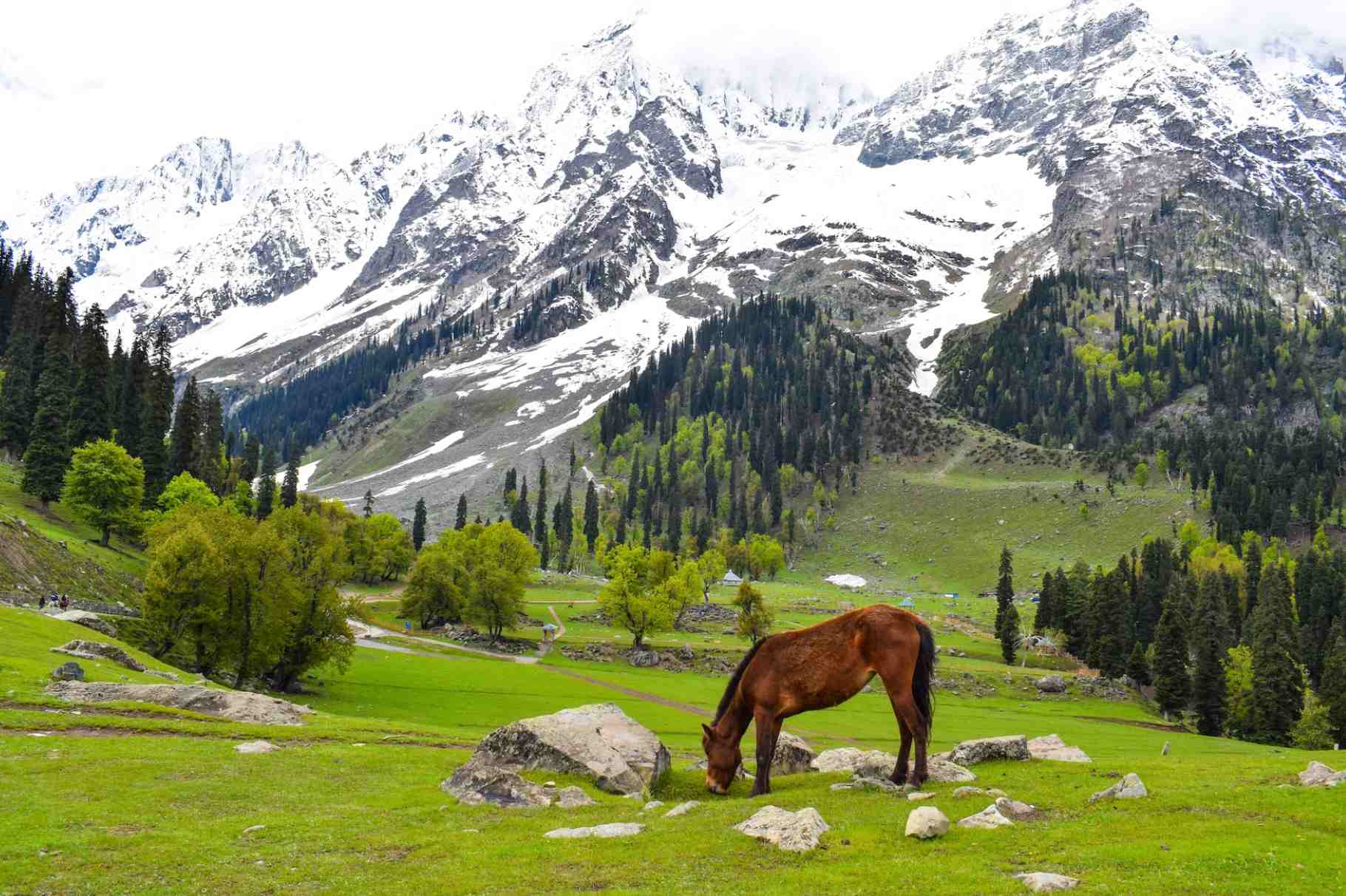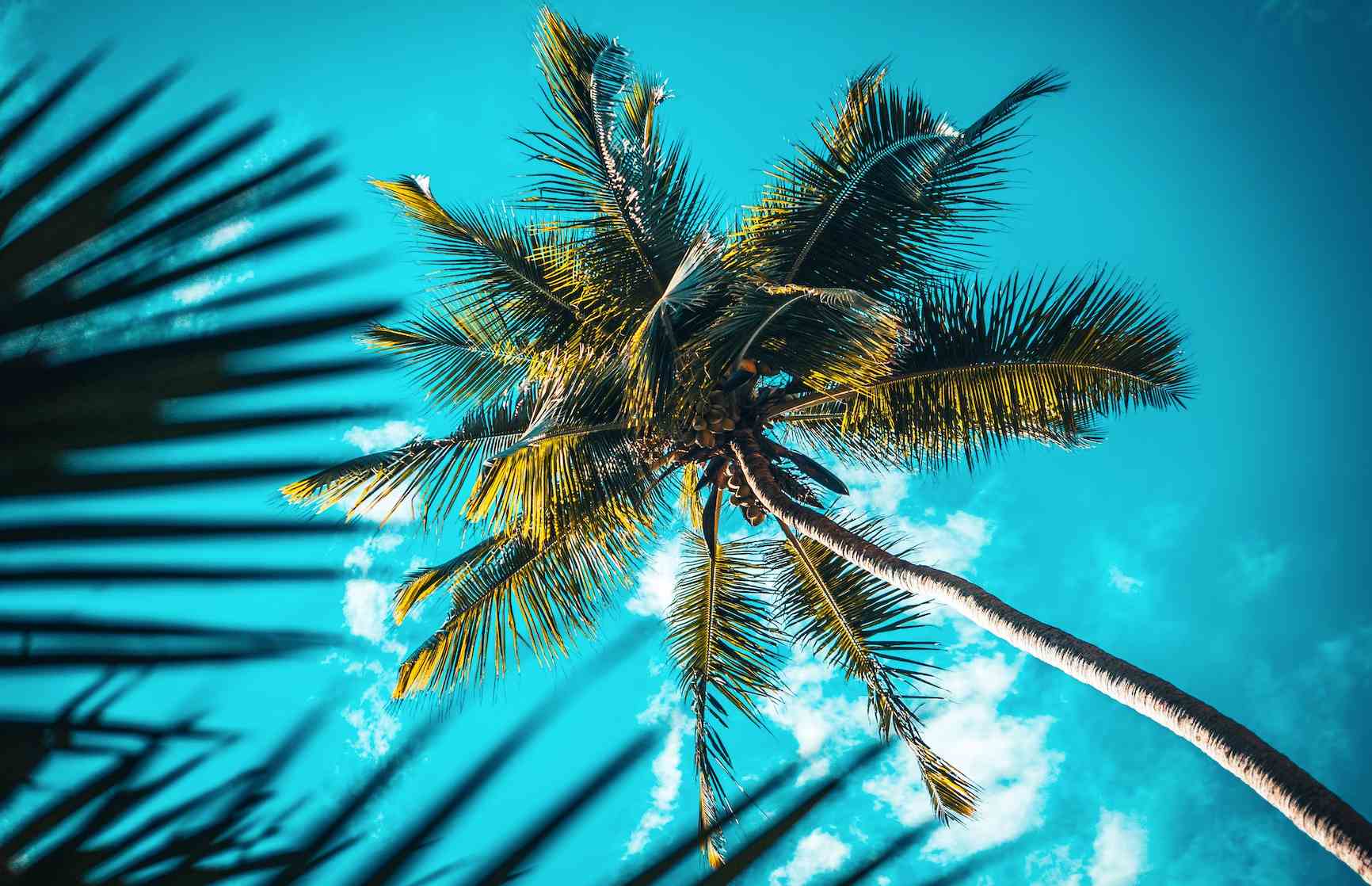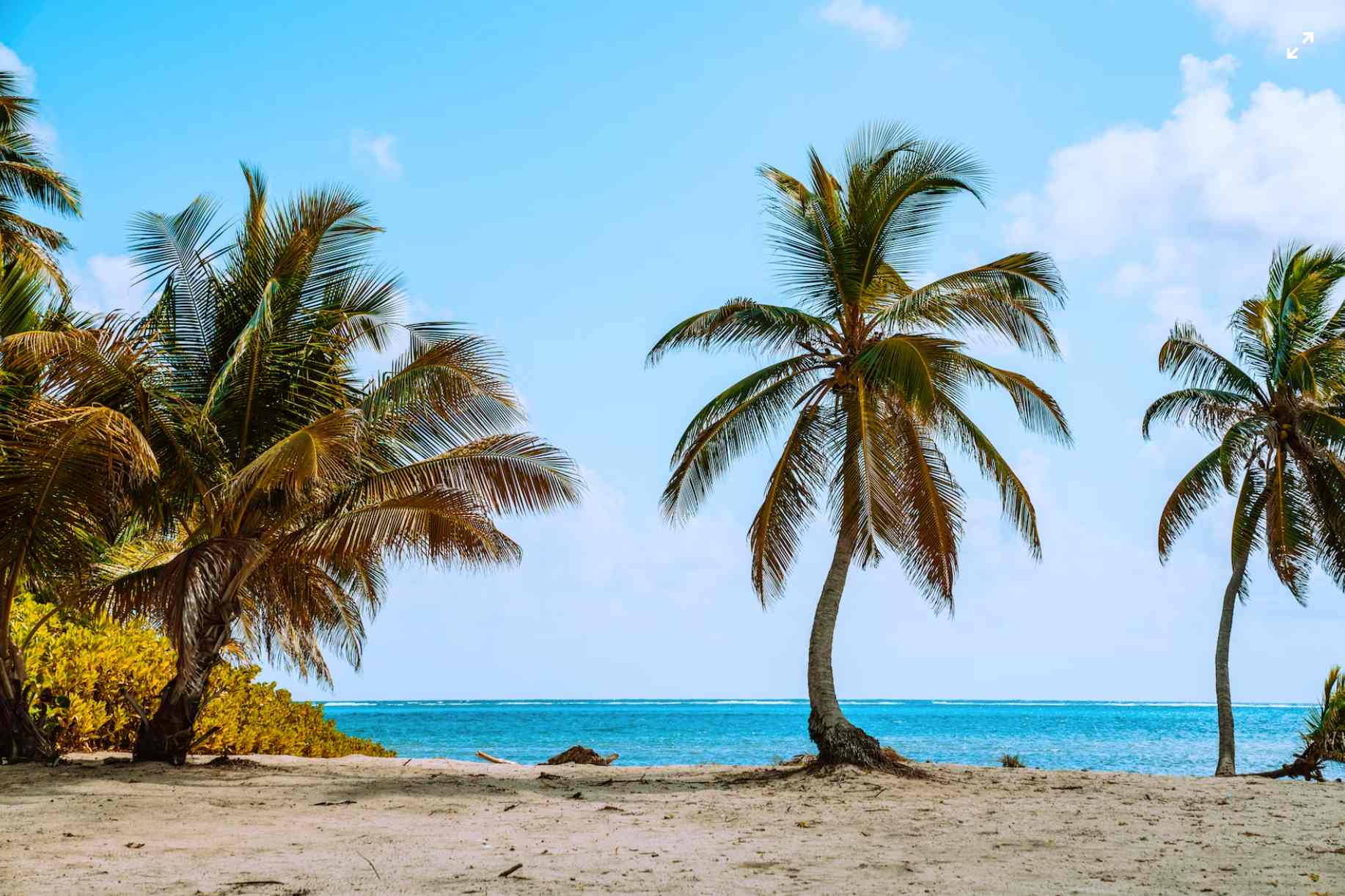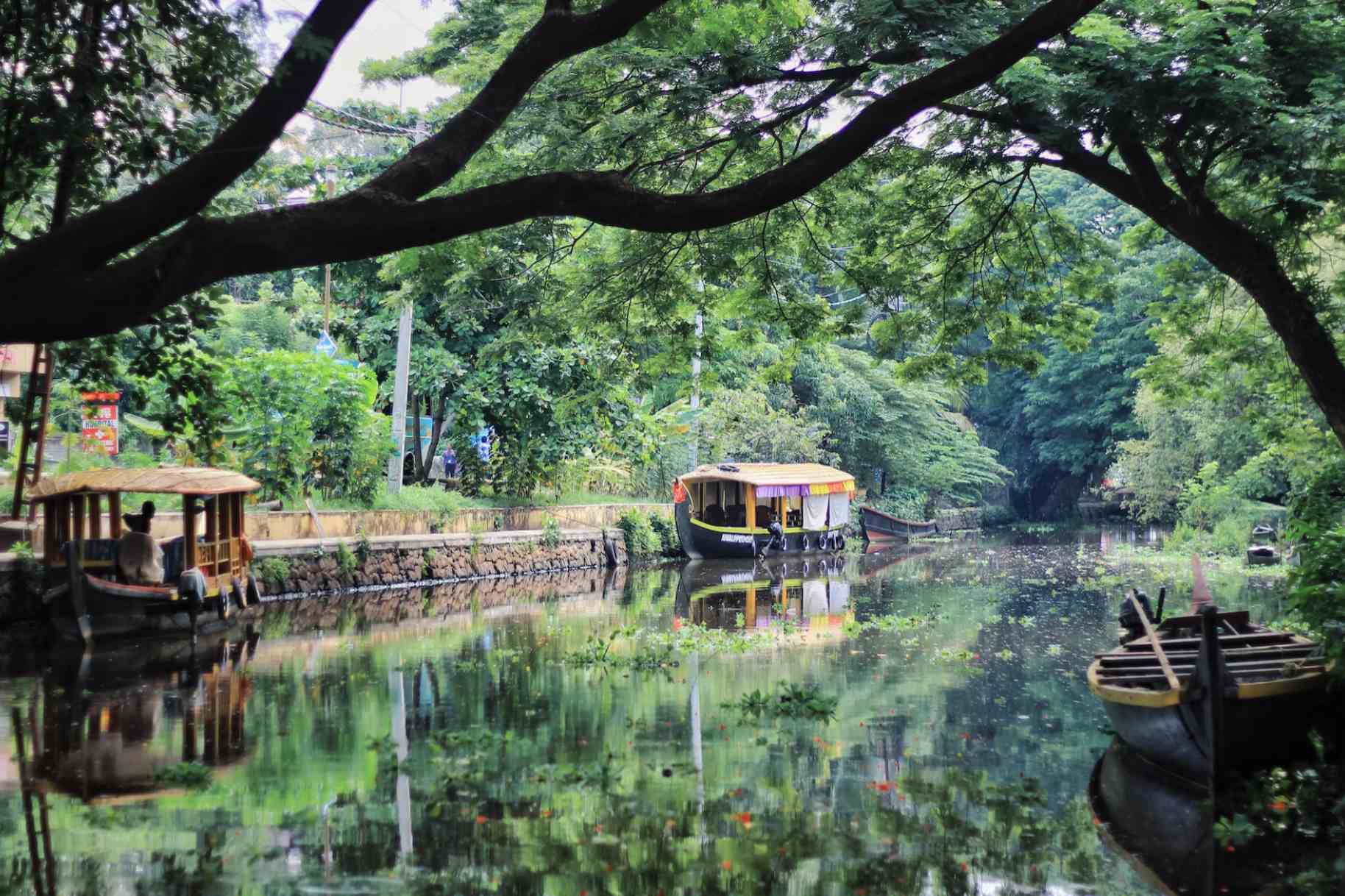East Java: The Land of Volcanoes, Waterfalls, and Temples
East Java is a province in Indonesia that is home to some of the most incredible natural and cultural attractions in the country. From the active volcanoes of Mount Bromo and Ijen Crater to the ancient temples of Malang and the stunning Tumpak Sewu Waterfalls, East Java has something to offer everyone.
How to get there?
The best way to get to East Java is to fly into Surabaya, the capital city. There are direct flights from many major cities in Indonesia, as well as from Singapore, Kuala Lumpur, and Bangkok. Once you arrive in Surabaya, you can take a train, bus, or taxi to your destination.
Where to stay?
There are a variety of accommodation options available in East Java, from budget hostels to luxury hotels. Here are a few popular places to stay:
Malang: This city is a good base for exploring the volcanoes and temples of East Java. There are many budget and mid-range hotels in Malang, as well as a few luxury options.
Bromo: There are a few hotels and resorts located near Mount Bromo. These hotels offer stunning views of the volcano and the surrounding landscape.
Ijen: There are a few homestays and guest houses located near the Ijen Crater. These accommodations are a more affordable option than the hotels in Bromo.
Pacitan: This coastal town is a popular spot for beach lovers. There are a variety of hotels and resorts located in Pacitan, ranging from budget to luxury.
When to go?
The best time to visit East Java is during the dry season, which is from April to October. During this time, the weather is sunny and clear, making it perfect for hiking, camping, and exploring the natural attractions.
What to do?
Here are some of the top things to do in East Java:
Hike up Mount Bromo
Mount Bromo is an active volcano situated in East Java, Indonesia. Hiking up Mount Bromo offers an awe-inspiring experience with stunning landscapes and breathtaking views. The trek to the summit provides an opportunity to witness the sunrise over a vast volcanic landscape, which includes the Bromo crater and the surrounding Tengger Caldera.
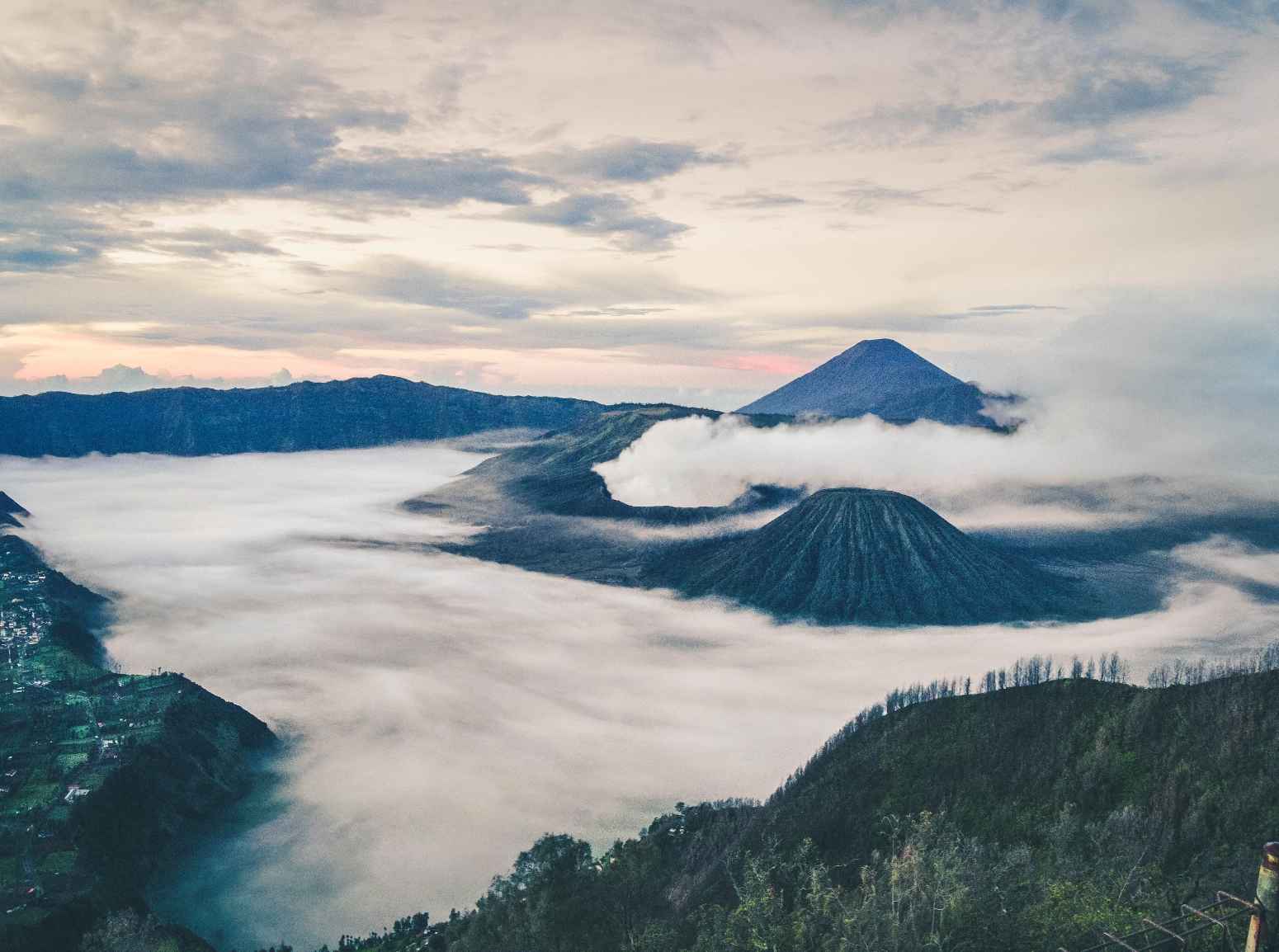
Here's what you need to know about hiking up Mount Bromo:
Getting There
Start your journey by travelling to Probolinggo, which is the nearest major town to Mount Bromo.
From Probolinggo, you can arrange transportation to the village of Cemoro Lawang, which serves as the base for hiking Mount Bromo.
Trekking Experience
The hike is about 3 kilometres (2 miles) long and takes about 2 hours to complete. The trail is mostly uphill, but it is not too steep. The best time to hike is early in the morning, so that you can catch the sunrise over the caldera.
Start your trek early in the morning, as the hike to the viewpoint takes about an hour.
The initial part of the hike involves climbing a series of stairs to the viewpoint on Mount Penanjakan. This is where you can witness the sunrise and capture breathtaking panoramic views of the Tengger Caldera, Mount Bromo, and other volcanoes in the area.
After enjoying the sunrise, you can descend from Mount Penanjakan and continue to the Sea of Sand, a vast desert-like area surrounded by mountains.
From the Sea of Sand, hike to the base of Mount Bromo and then ascend to the crater rim. The final ascent involves climbing a flight of stairs to the edge of the crater, where you can peer into the smouldering crater.
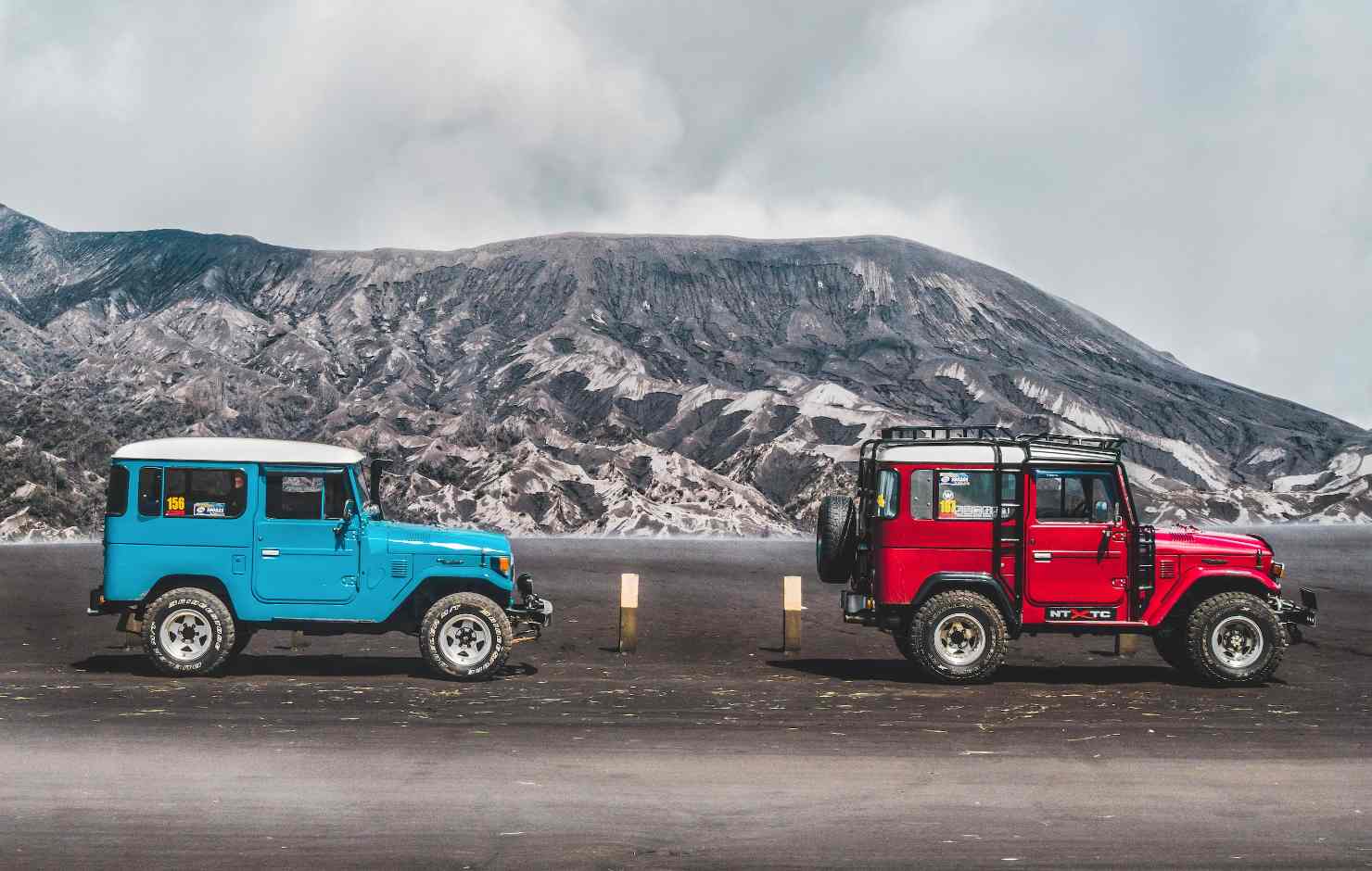
Tips for the Hike
Dress warmly, as the temperatures can be chilly, especially in the early morning hours.
Wear comfortable and sturdy footwear suitable for hiking.
Carry a flashlight or headlamp if you're hiking before sunrise.
Bring plenty of water and some snacks for the hike.
Consider wearing a mask or covering your nose and mouth, as the volcanic ash can be dusty during the hike.
It's recommended to hire a local guide who is familiar with the route and can provide valuable insights about the area.
Best Time to Visit
The dry season, from April to September, is the best time to hike Mount Bromo. During this period, the weather is generally clear, offering optimal visibility for sunrise views.
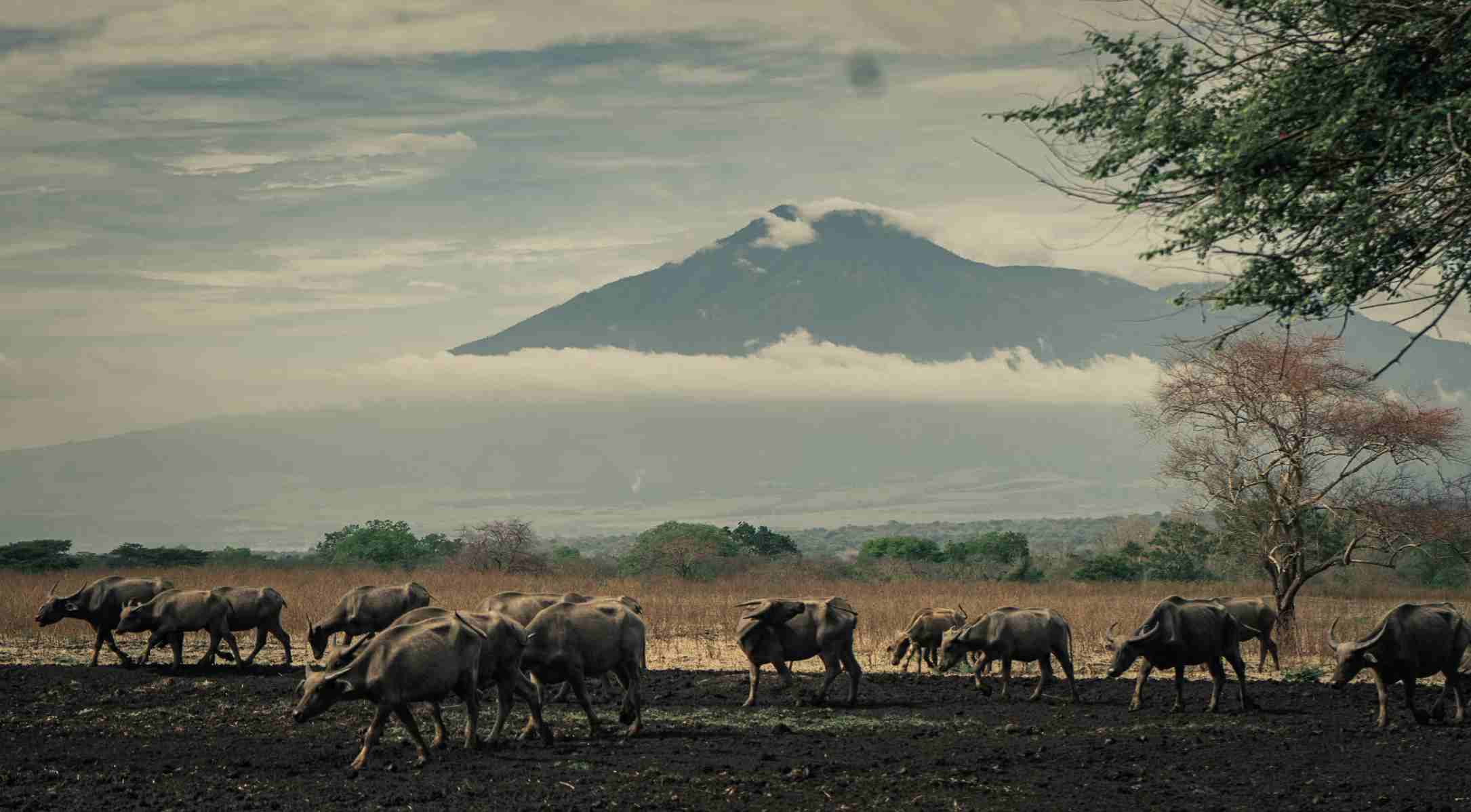
Cultural Considerations
Mount Bromo holds significance in local Tenggerese culture. The Tengger people consider the volcano to be sacred and conduct various rituals around it.
Be respectful of the local culture and follow any guidelines or instructions provided by your guide.
Hiking up Mount Bromo is a rewarding adventure that allows you to witness the power of nature and the beauty of Indonesia's volcanic landscapes. Remember to plan ahead, be prepared for varying weather conditions, and enjoy the unique experience that this iconic volcano has to offer.
Trek to the Ijen Crater
Trekking to the Ijen Crater is an incredible adventure that takes you to the heart of East Java, Indonesia. The Ijen Crater is known for its mesmerising blue flame phenomenon, stunning turquoise acidic crater lake, and the hardworking sulphur miners who extract sulphur from the crater.
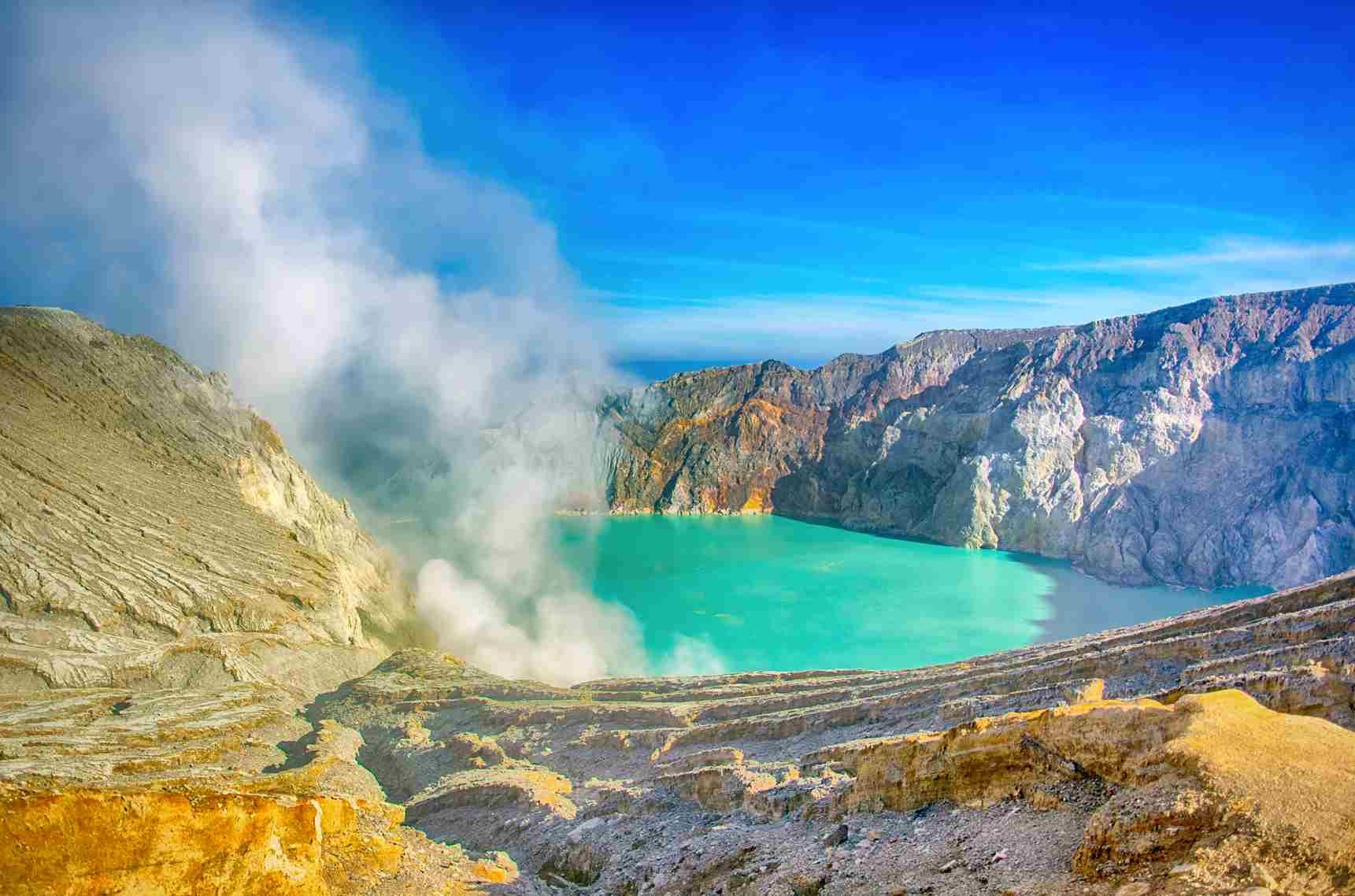
Here's what you need to know about trekking to the Ijen Crater:
Getting There
The journey typically begins in the town of Banyuwangi, which is the gateway to the Ijen Crater.
From Banyuwangi, you'll need to drive to the base of Mount Ijen, which is the starting point of the trek.
Trekking Experience
The trek to the Ijen Crater usually begins in the early morning hours to witness the blue flame phenomenon and the sunrise over the crater.
The trail takes you through a lush and picturesque landscape, with occasional steep sections.
The highlight of the trek is reaching the rim of the Ijen Crater and witnessing the surreal blue flames emitted by the burning sulfuric gases. This is a rare phenomenon that occurs due to the combustion of sulfuric gases at high temperatures.
After experiencing the blue flames, you can continue your trek to the edge of the crater lake. The turquoise-coloured lake is one of the most acidic in the world and provides a stunning contrast against the rugged surroundings.
You may also encounter sulphur miners carrying heavy loads of sulphur chunks up and down the crater. It's an opportunity to witness their strenuous work and learn about their challenging livelihoods.
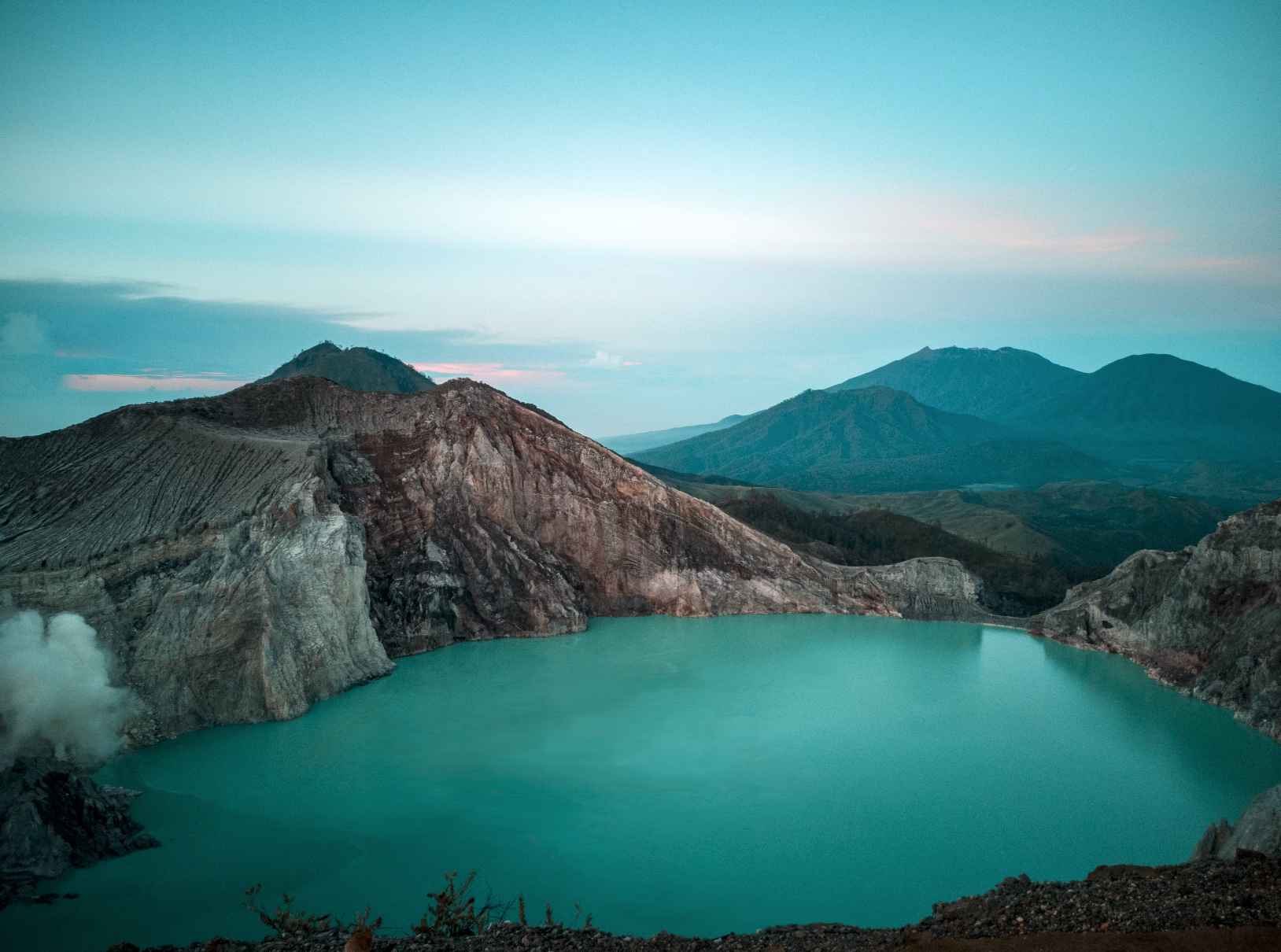
Tips for the Trek
Wear sturdy hiking shoes, as the terrain can be uneven and steep in some areas.
Dress in layers to stay warm, especially in the early morning hours.
Bring a flashlight or headlamp for the dark portions of the trek before sunrise.
Carry sufficient water and some snacks for the trek.
Consider wearing a mask or covering your nose and mouth, as the sulfuric gases can be strong near the crater.
It's a good idea to hire a local guide who is familiar with the route and can provide insights about the area.
Best Time to Visit
The best time to trek to the Ijen Crater is during the dry season, from April to September. During this period, the weather is generally clear, providing optimal visibility for the blue flames and sunrise.
Cultural Considerations
Similar to Mount Bromo, the Ijen Crater holds cultural significance for the local communities. It's important to respect their beliefs and traditions.
Trekking to the Ijen Crater offers a unique and unforgettable experience that allows you to witness the extraordinary natural phenomena and the resilience of the sulphur miners. As you embark on this adventure, take in the beauty of the landscape and the awe-inspiring sights that await you at the summit of Mount Ijen.
Visit the Tumpak Sewu Waterfalls
Visiting Tumpak Sewu Waterfall, also known as Coban Sewu, is a must for nature enthusiasts and adventure seekers exploring the East Java region of Indonesia. This stunning waterfall is often referred to as the "Thousand Waterfalls" due to its unique tiered structure that resembles a curtain of water.
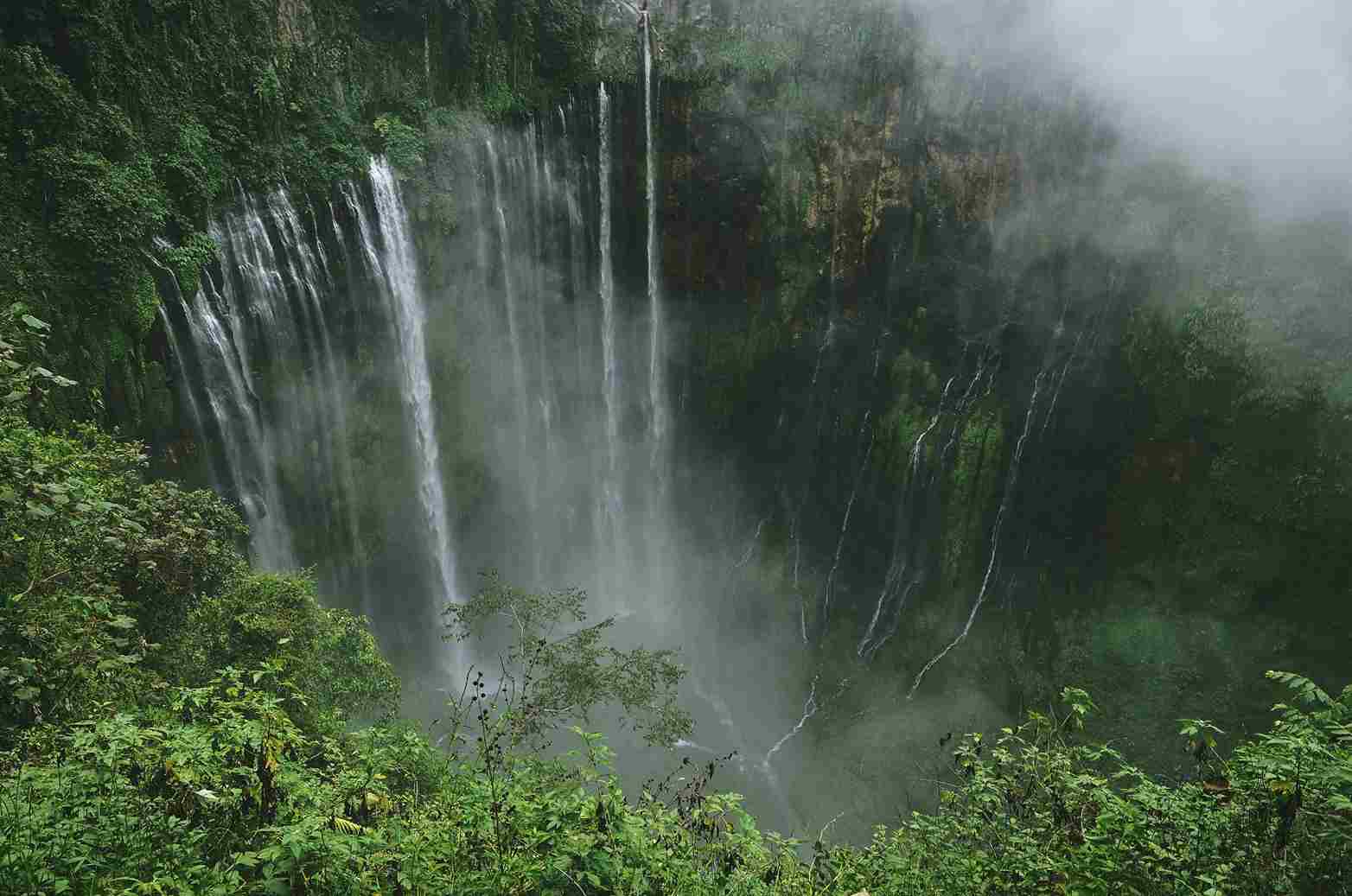
Location
Tumpak Sewu Waterfall is located in the Lumajang Regency of East Java, Indonesia. It's situated within the Tengger Semeru National Park, which is also home to Mount Semeru, the highest volcano in Java.
To get to Tumpak Sewu Waterfalls, you can take a bus from Malang to Lumajang. From Lumajang, you can take a taxi or motorbike to the waterfalls. The entrance fee is 20,000 Indonesian Rupiah (about INR 120).
Trekking Experience
The journey to Tumpak Sewu Waterfall involves a trek through lush landscapes and terraced rice fields. The trail can be challenging and involves both ascending and descending sections.
The highlight of the trek is reaching the viewpoint overlooking the waterfall. From this vantage point, you can witness the breathtaking sight of Tumpak Sewu as it cascades down multiple tiers, surrounded by vibrant greenery.
For those seeking a closer experience, you can continue the trek down to the base of the waterfall. This descent can be steep and slippery, so sturdy footwear is essential. However, getting to the base allows you to feel the mist and the power of the cascading water.
Best Time to Visit
The best time to visit Tumpak Sewu Waterfall is during the dry season, from April to September. During this period, the weather is more predictable, and the trail conditions are generally better.
It's advisable to visit in the morning to avoid crowds and to capture the best lighting for photography.
Tips for Your Visit
Wear comfortable and sturdy hiking shoes suitable for both trekking and potential water crossings.
Bring sufficient water and snacks, as the trek can take several hours.
Pack insect repellent to ward off any bugs you might encounter along the trail.
Consider hiring a local guide who is familiar with the area and can provide insights about the trail and the waterfall.
Remember to respect the environment by following the "Leave No Trace" principles and not littering.
Cultural Considerations
The Tengger people, who inhabit the region, consider the area sacred. Show respect for their beliefs and traditions during your visit.
Photography Opportunities
Tumpak Sewu Waterfall offers incredible photo opportunities. Don't forget to bring your camera or smartphone to capture the natural beauty of the surroundings.
Visiting Tumpak Sewu Waterfall promises an unforgettable adventure surrounded by stunning landscapes. Whether you're captivated by the tiered waterfalls, the lush greenery, or the sense of serenity, the experience at Tumpak Sewu is bound to be a highlight of your journey through East Java.
Explore the ancient temples and rainbow village in Malang
Exploring the ancient temples in Malang, Indonesia, offers a fascinating journey into the region's rich history and cultural heritage. While Malang is more famous for its natural beauty, it's worth delving into its lesser-known historical gems. Here are a few ancient temples in and around Malang that you can explore:
Singosari Temple
Located around 12 kilometres north of Malang, Singosari Temple is a significant historical site. It was built in the 13th century and is dedicated to King Kertanegara, the last king of the Singhasari Kingdom.
The temple features intricate carvings and sculptures that depict scenes from ancient Javanese epics and legends. The main temple structure is adorned with detailed reliefs and statues of various deities.
The surrounding area offers a serene atmosphere, making it a perfect spot for photography and historical exploration.
Jago Temple (Candi Jago)
Situated near Singosari Temple, Jago Temple is another ancient Hindu temple dating back to the 13th century. It's known for its unique architecture and sculptures.
The temple features a distinctive roof design that resembles a stepped pyramid. Intricate carvings depict various deities, mythological scenes, and cultural elements.

Kidal Temple (Candi Kidal)
Also located near Singosari Temple, Kidal Temple is another remarkable historical site. It's believed to have been built in the 13th century as a funerary temple for Anusapati, the successor of King Kertanegara.
Kidal Temple's architecture combines Hindu and Javanese styles. The temple's base is adorned with intricate reliefs that depict scenes from the Ramayana and other stories.
Badut Temple (Candi Badut)
This temple complex is located within Malang city limits. Badut Temple dates back to the 8th century and is one of the oldest temples in the region.
The temple complex consists of several structures, each with unique carvings and architectural features. The main temple is dedicated to the Hindu god Ganesha.
The site also includes a museum where you can learn more about the history and significance of the temple.
Candi Kidal Reliefs
Some of the reliefs from Candi Kidal are now displayed at the Tugu Malang Museum in the city centre. These reliefs provide insights into the cultural and artistic heritage of the region.
Tips for Your Visit
Wear comfortable clothing and footwear suitable for exploring temple grounds.
Respect the sacred nature of the sites by dressing modestly and following any guidelines provided by the local authorities.
Consider hiring a local guide who can provide historical context and insights about the temples.
Keep in mind that some temples may have an entrance fee.
Exploring the ancient temples of Malang allows you to step back in time and appreciate the intricate craftsmanship and historical significance of these cultural landmarks. It's a unique way to experience a different facet of the region's heritage beyond its natural attractions.
Visit the Rainbow Village in Jodipan, Malang
Visiting the Rainbow Village in Malang, Indonesia, offers a vibrant and visually captivating experience. The Rainbow Village, also known as "Kampung Pelangi," is a community-led initiative that has transformed a once run-down neighbourhood into a colourful and lively destination. Here's what you can expect when you visit the Rainbow Village:
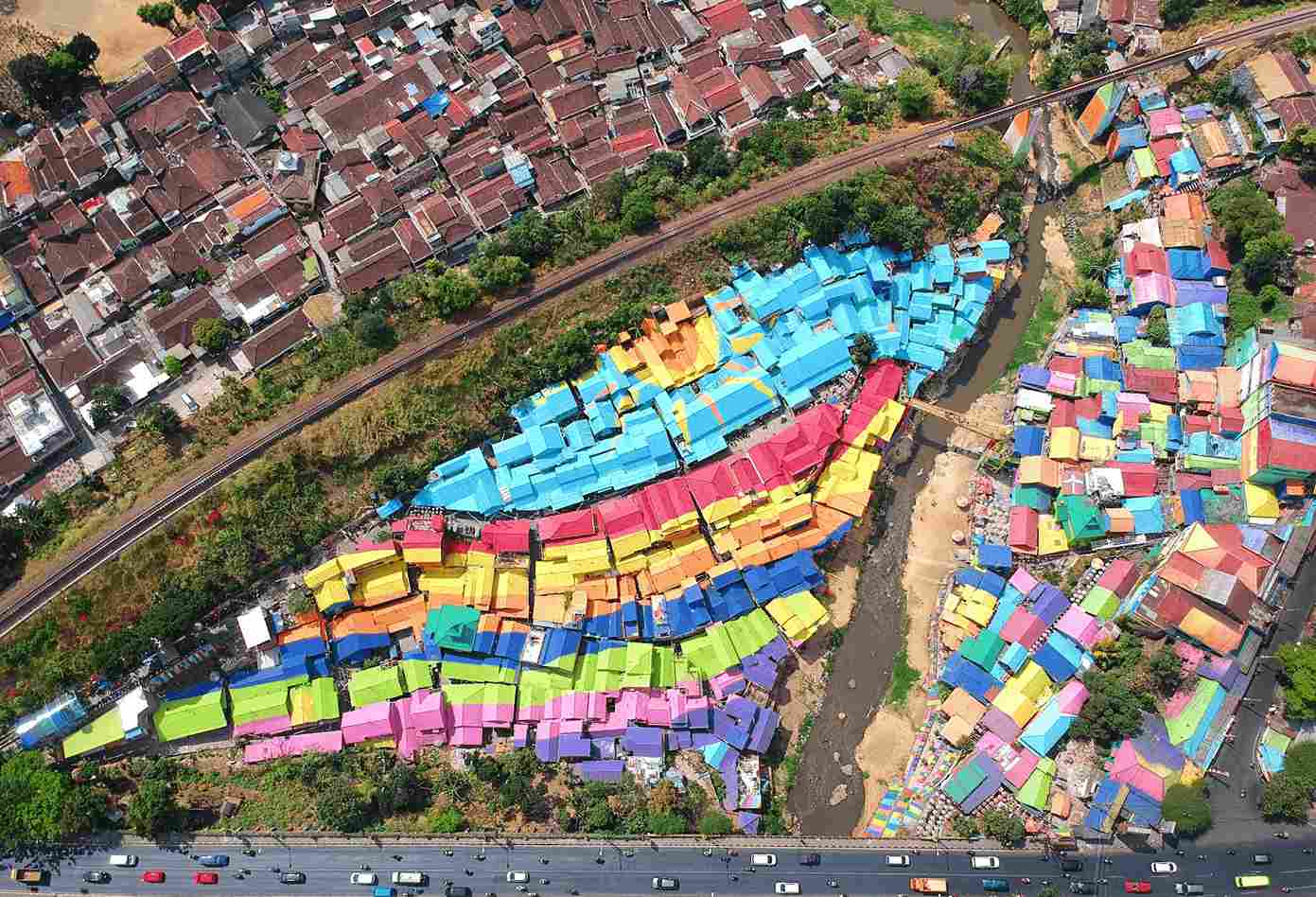
Colourful Murals and Painted Houses
As the name suggests, the Rainbow Village is known for its colourful murals and painted houses. Virtually every surface in the village is adorned with bright and lively colours, creating a visually stunning atmosphere.
The murals depict various themes, from nature and animals to cultural scenes and whimsical designs. Each mural has its unique charm and story.
Local Community Engagement
The transformation of the village was a collaborative effort involving local residents, artists, and volunteers. The initiative aimed to revitalise the neighbourhood and attract tourism, while also fostering a sense of pride and community among the residents.
The project's success has brought positive changes to the lives of the residents, as well as an increase in tourism to the area.
Photography Opportunities
The Rainbow Village is a paradise for photographers and Instagram enthusiasts. The vibrant colours and creative murals provide a backdrop for unique and eye-catching photos.
You can capture shots of the colourful alleyways, intricate details of the murals, and interact with the local residents to capture candid moments.
Cultural Experience
Exploring the Rainbow Village offers a glimpse into the local culture and creativity of the people of Malang. The artistic expression and use of colour reflect the community's identity and aspirations.
Interacting with the villagers can provide insights into their way of life, stories behind the murals, and the positive impact of the project on the neighbourhood.
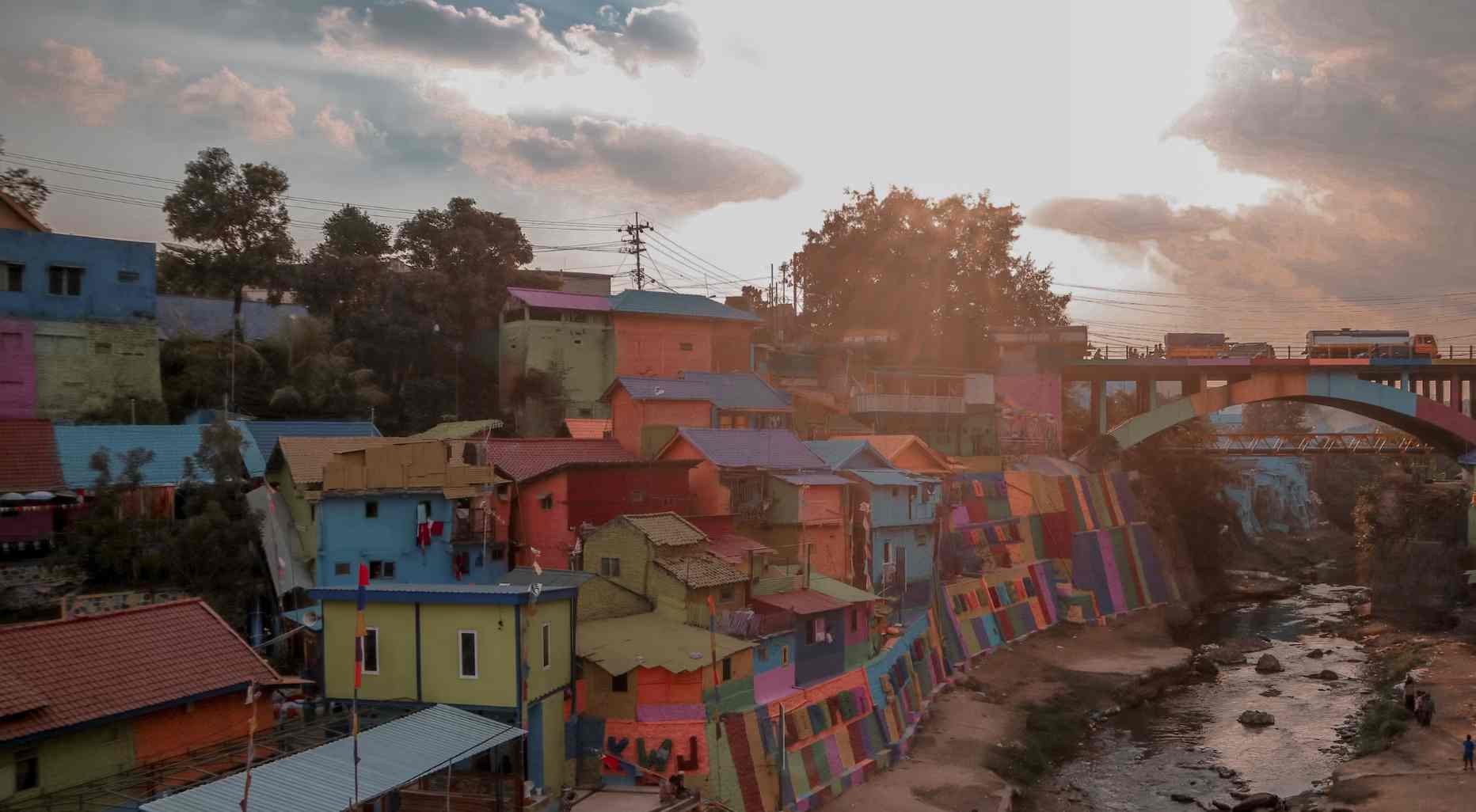
Tips for Your Visit
The Rainbow Village is located in the Jodipan area of Malang. You can easily reach it by taxi, ride-sharing services, or local transportation.
Consider visiting during the early morning or late afternoon for the best lighting conditions and fewer crowds.
Respect the privacy of the local residents and avoid intruding on their homes or personal spaces.
Bring your camera or smartphone to capture the vibrant scenes and colourful moments.
Community Souvenirs
You might find local vendors selling handicrafts, souvenirs, or artwork inspired by the Rainbow Village. Supporting these vendors helps contribute to the local economy and community.
Relax on the beaches of Pacitan
Pacitan is a coastal town located in East Java. The beaches in Pacitan are known for their white sand and clear waters. They are a popular spot for swimming, sunbathing, and surfing.
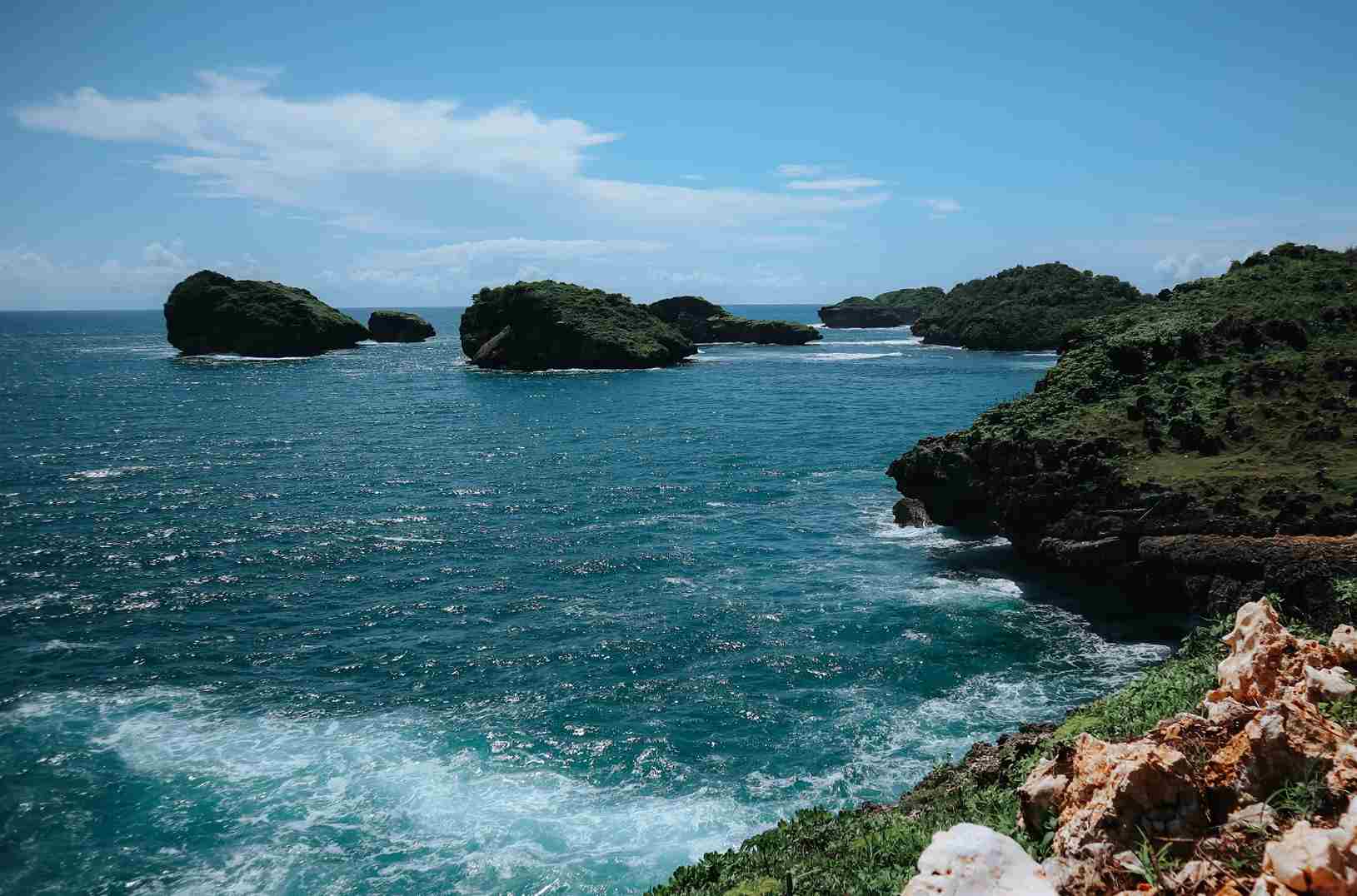
Here are some of the best beaches in Pacitan where you can relax and enjoy the beautiful scenery:
Klayar Beach: This beach is located in Pacitan Regency, East Java, Indonesia. It is known for its white sand and clear waters. There are also several coral reefs off the coast of Klayar Beach, making it a popular spot for snorkelling and diving.
Teleng Ria Beach: This beach is located in Pacitan Regency, East Java, Indonesia. It is known for its beautiful sunsets and its many rock formations. There are also several restaurants and cafes located near Teleng Ria Beach, making it a popular spot for tourists.
Watulombo Beach: This beach is located in Pacitan Regency, East Java, Indonesia. It is known for its towering cliffs and its secluded location. Watulombo Beach is a popular spot for camping and hiking.
Srau Beach: This beach is located in Pacitan Regency, East Java, Indonesia. It is known for its black sand and its strong waves. Srau Beach is a popular spot for surfing.
Pasih Weru Beach: This beach is located in Pacitan Regency, East Java, Indonesia. It is known for its natural beauty and its secluded location. Pasih Weru Beach is a popular spot for swimming and sunbathing.
Frequently Asked Questions (FAQ) while visiting East Java
1. What is East Java known for?
East Java is known for its diverse attractions, including stunning volcanoes, cultural heritage sites, beautiful beaches, and vibrant cities.
2. How do I get to East Java?
You can access East Java through its major airport, Juanda International Airport in Surabaya. There are also train and bus services connecting various cities within the province.
3. What are the must-visit destinations in East Java?
Some must-visit destinations in East Java include Mount Bromo, Ijen Crater, Malang, Surabaya, Pacitan, and the beautiful beaches along the coastline.
4. When is the best time to visit East Java?
The best time to visit is during the dry season, from May to September. This period offers pleasant weather for outdoor activities and sightseeing.
5. How can I explore Mount Bromo and Ijen Crater?
You can join guided tours that offer trekking experiences to Mount Bromo for sunrise and to the Ijen Crater to witness the blue fire phenomenon. Local guides are recommended for safety.
6. Are there cultural attractions in East Java?
Yes, East Java has a rich cultural heritage. Visit the ancient temples of Malang, enjoy traditional dances, and explore historical sites in cities like Surabaya.
7. What activities can I enjoy in East Java?
Activities include volcano trekking, surfing, exploring cultural landmarks, visiting local markets, indulging in traditional cuisine, and relaxing on the beaches.
8. Can I find accommodation options in East Java?
Yes, East Java offers a range of accommodation options, from budget guesthouses to luxury resorts. Major cities like Surabaya and Malang have a variety of choices.
9. How can I get around East Java?
You can use public transportation like buses and trains to get around cities. For exploring attractions outside the cities, guided tours or private transportation is recommended.
10. What should I pack for my trip to East Java?
Pack lightweight and breathable clothing for the tropical climate, comfortable walking shoes, sunscreen, insect repellent, a hat, and any necessary medications.
11. Are there any health precautions I should take?
It's advisable to consult a healthcare professional before travelling to ensure you have necessary vaccinations and medications. Drink bottled water and follow food safety guidelines.
12. Are there local festivals and events to experience?
Yes, East Java celebrates various cultural festivals and events. Research the local calendar to see if there are any festivals happening during your visit.
13. Can I explore the local cuisine?
Absolutely! East Java offers a wide variety of local dishes. Don't miss out on trying traditional Javanese cuisine and street food.
14. Is there a specific etiquette I should follow?
Respect local customs and traditions. It's recommended to dress modestly when visiting temples or other religious sites.
15. Are there eco-friendly practices I should follow?
Practise responsible tourism by minimising plastic use, not littering, and supporting eco-friendly initiatives.
16. What language is spoken in East Java?
The official language is Indonesian. Learning a few basic phrases can enhance your travel experience.
17. How can I interact with locals and learn about their culture?
Engage in conversations with locals, participate in cultural activities, and visit local markets and traditional villages to learn about their way of life.
18. Is East Java safe for travellers?
East Java is generally safe for travellers. However, like in any destination, be cautious with your belongings and follow local safety guidelines.
19. Can I explore off-the-beaten-path destinations in East Java?
Yes, there are many hidden gems in East Java. Research and consider visiting lesser-known places for a unique experience.
20. How can I support local communities during my visit?
Support local businesses, artisans, and initiatives. Responsible tourism helps contribute to the local economy and community development.
Visiting East Java offers a diverse range of experiences, from natural wonders to cultural encounters. By being well-prepared and respectful of local customs, you can make the most of your trip and create lasting memories in this captivating Indonesian province.












